 ..... ..... 
,,LARISA.................................LEONID
ALEKSEYCHUK
Canadian Filmakers
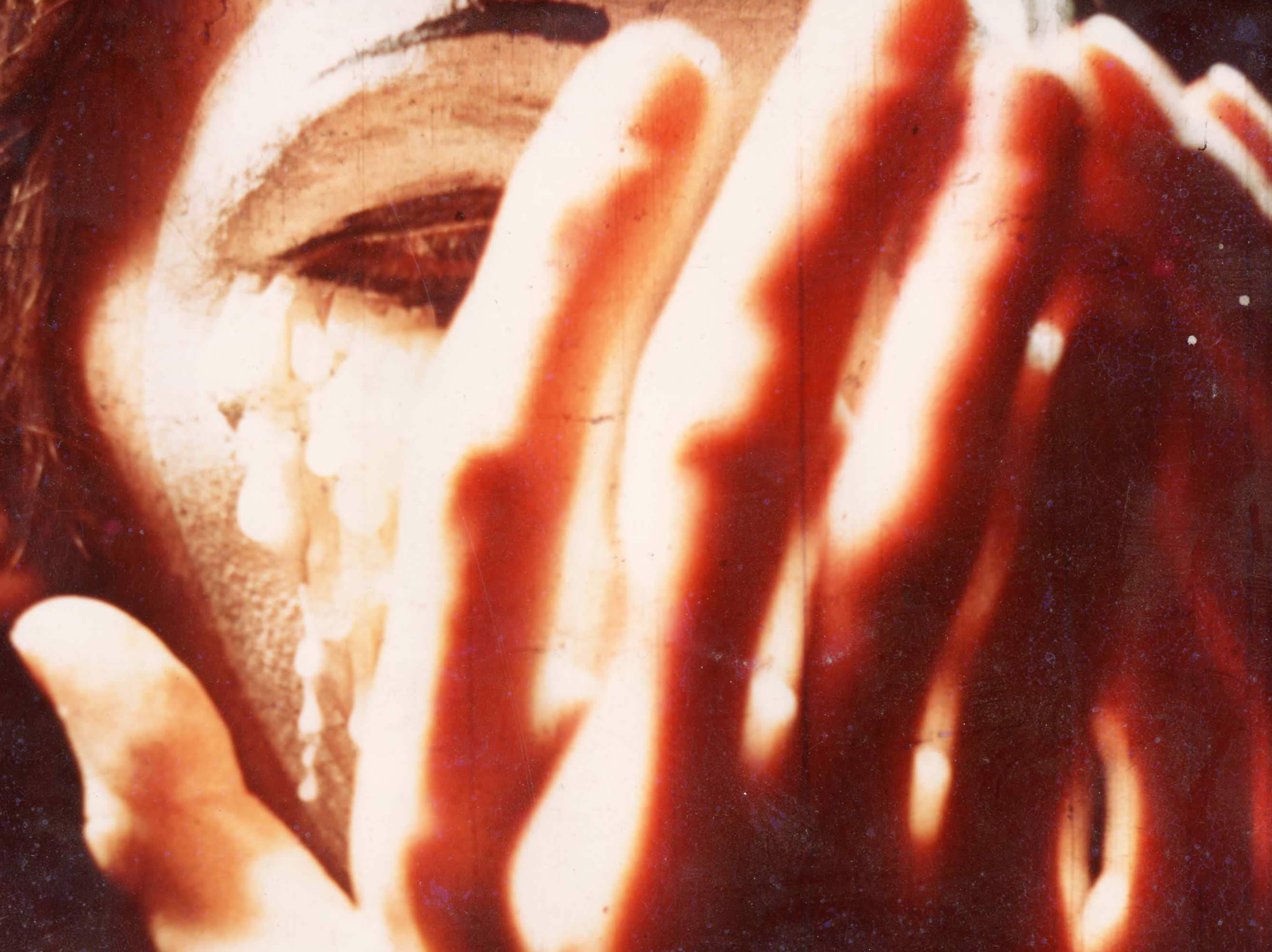
BIOGRAPHICAL DATA.
Born in Kiev, both Leonid and Larisa Alekseychuk worked at cinema and TV studios of Kiev, Donetsk, Novosibirsk, Moscow and Leningrad, where they wrote and directed a host of films and television programs, too numerous to mention.
Such films of theirs as "Northern Sketches","Leningrad Ballet" and "Alice" were awarded at the All-Union Festivals, and others, namely "The Song Of Igor's Campaign" and "The Heart Of Polichinelle" were banned and destroyed by censorship. Among their major works for television to be mentioned are TV adaptations of Irving Stone's "Lust For Life" fused with art history, and Graham Green's "The Quiet American" united with journalistic TV essay "Each Of Us And Vietnam", plus numerous telefilms and programs of stylistic research in all genres, from the variety and art programs to documentaries. Bringing dramatic intensity into documentary works, bold visual experimentation in soundstage-based programs and fusing into an organic unity the genres considered incompatible, became the team's trademark.
Another one, their resistance to the propagandistic falsehood, was severely condemned in an article "To Be Expelled" published in the Party newspaper "Sovetskaia Sibir" ("TheSoviet Siberia"). Several years later, the menacing title became a swiftly realized prophecy.
In "The Heart Of Polichinelle" (Leningrad, 1973-1975), with Larisa as scriptwriter and Leonid directing, the footage on the rebellious choreographer Leonid Jacobson was interwoven with a dramatic storyline of Polichinelle, Jacobson's choreografic character transformed into his filmic alter ego. An uncommon stylistic blend, which the authors were proud of, was branded by the authorities "a gross deviation from the principles of Socialist Realism", and the film was destroyed upon completion. The blacklisted authors were forced to leave the USSR for good.
Only 17 years later, in Italy, "The Heart" was restored on video, thanks to the timely salvaging and secretly preserving workprint outtakes, and had its world premiere at the 1993 FIPA (Festival International de Programmes Audiovisuels) in Cannes. The film was acquired and broadcast nationally by the RAI TV corporation, but its Russian distribution is still sabotaged by the Party vandals recycled as democrats. Red-nosed buffoons are still afraid of a white clown.
Starting in the West practically from zero, with not a strip of film to show, the Alekseychuks wrote and directed "Letters In An Unknown Language" for TV Ontario ( a 30-min documentary on an English language class for immigrants, Toronto, 1978); wrote, directed and produced a 20-part series of shorts for CBC and Radio Canada entitled "The Midsummer Day’s Sketches" ( Toronto- Montreal, 1977-1979), and an hour-long adaptation of Alexander Pushkin's "Mozart and Salieri" in Leonid's translation (New York, 1985-1987) fully elaborated and produced at his two-semester Directing Class at the NYU Film and TV Institute, where Leonid was Associate Professor of Directing and Scriptwriting and Larisa taught Editing. The film was selected for Cinema Today and Tomorrow section at 1987 Montreal Festival Des Films Du Monde.
During their NYU teaching years, the team elaborated a Dinamic Diagonal method of an integrated approach to developing an idea both at the page and on the set, in their real-life
interlacing. Apart from becoming later the backbone of their Intensive Course Of Directing, that “custom-made” method influenced its authors as well, up to working out a tragic climactic scene for Somerset Maugham’s “Rain”, overlooked or cautiously avoided by the public-conscious author who preferred to sell his masterpiece for the Hollywood’s triple, increasingly hypocritical massacre.
In 1994-95 Larisa and Leonid visited their native Ukraine and shot an hour-long documentary "There is a Ukraine beyond Chernobyl", acquired and transmitted by the Italian national network RAI and Orbite 2000 satellite network. Several times retransmitted by RAI in 2004, during the Orange Revolution, the film depicting long bygone events proved to be as actual as almost 10 years ago: thanks to its involving human portrayals, the viewer could see individual faces and characters in festive crowds preferred by the rushed news coverage.
During the last decade and a half, the couple has held in Italy more than 40 editions of their private Intensive Course of Directing, with a total enrolment of about 800 students, some of them eventually participants and prize winners of the Venice Festival, plus the same course for a united group of scriptwriters and directors at the National School of Cinema in Rome ( until recently Centro Sperimentale). with an enthusiastic appreciation by such advanced students. Leonid has also taught a scriptwriting course at the Gregorian University's Centre of Communication (Rome, 1996).
Larisa and Leonid wrote also a lot of film criticism, mostly for the Ukrainian broadcasting entities and publications in USA and Canada ( The Voice of America, Radio Canada, Ukrainian-language monthly "Modern Times"); and, as soon as it became politically possible, published several feature articles on Fellini and European cinema plus regular yearly reviews of the Venice festival in the Ukrainian newspapers and trade magazines such "The Evening Kiev"and "Literaturna Ukraina", weekly "Screen News", monthly "Cinema.Theatre." and trade quarterly "Kinokolo".
Leonid's extensive monographic article "Warrior In The Field", on Serghei Paradzhanov, was published in 1990-91 winter edition of a BFI quarterly "Sight & Sound"; a theoretical essay " True to the Art", in Cinema Canada ( 1981, Toronto), and a 2001 feature article on the early Kim Ki Duk
"It Hurts" was reprinted in 4 languages, from Korea and Vietnam to Italy, from Israel to the UK.
Since 1996 a regular Radio Liberty's freelance correspondent in Italy, Leonid transmitted in January-February 2005 a series of reports from Kiev on the Orange Revolution's contradictory aftermath. During that long homecoming, the couple has also filmed their new documentary, a
4 hour-long special “Hands Over The Fire”, presently in post-production, to be aired on RAI network,.
All but locked in any linguistic or thematic ghetto, the Alekseychuks are also developing a feature trilogy script in English, with action unfolding in New York, and a theatrical play in Russian.
Citizenship: Canadian
Residence: via Enrico Cernuschi, 9, Rome 00152, Italy.
Working languages: English, Italian, Russian, Ukrainian
cell. 39- 340 5377 497
Detailed resumes are available on request. E-mail: larry_lex@yahoo.com
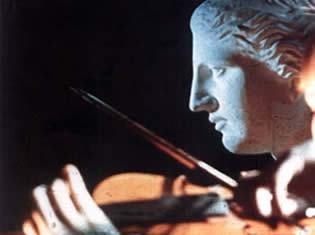
THE HEART OF POLICHINELLE
55 min., b&w, colour,
English subtitles and Voice Over
Leningrad 1975 - Rome, 1993
WRITTEN, DIRECTED AND PRODUCED by
Leonid & Larisa ALEKSEYCHUK
9, Via Enrico Cernuschi Rome 00152 Italy
Tel. 0039 06 588 10 25
e-mail: larry_lex@yahoo.com

“ Jacobson’s imagination is boundless. He is a prophet of choreography.”
( Dmitri Shostakovich)
“ I’ll never forget the impression of Leonid Jacobson’s choreography.”
( Eugene Ormandi)
“ Jacobson was known as “ Chagall of ballet”. Creating almost in inspired frenzy, he was discovering in me the capacities which I myself did not suspect to possess. He was himself a masterpiece of a man.”......................
............................(Natalia Makarova)
.......................“ One of the most original choreographers of our century.”
( Michail Baryshnikov)
“ The world of dance is about to discover a great master of choreography unaware.of having ever lost him.”
( Janice Rose, “ New York Times”)
“ Dear Leonid and Larisa, I am deeply moved by your film, a truly heroic act. Accept my.gratitude for your love of Jacobson’s art which you have preserved through all these difficult .years.”
( Irina Jacobson)
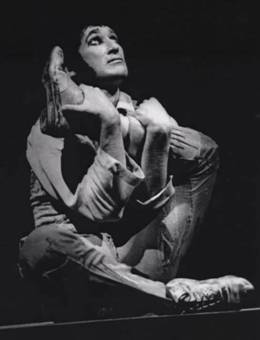
| |
Based on life and work of choreographer Leonid Jacobson( 1904-1975), too famous in Russia
to ignore him but too innovative, “too Jewish” and too outspoken to tolerate his true portrayal,
“The Heart Of Polichinelle”, written e directed by Leonid and Larisa Alekseychuk in 1975
in Leningrad, fell victim to an actual pogrom launched by the Soviet censorship in the name
of the notorious “ Socialist Realism”. By its absurd logic, even the film’s negative was destroyed. Resurrected thanks to the timely hidden positive outtakes, “Polichinelle” in video version had its world premier at the FIPA (Festival International de Programmes Audiovisuelles), Cannes, 1993. However unpleasant such belated a release might be, a 17-year delay for a film sentenced to death can be considered even modest.
Worthy of a separate film, the story of the footage’s dramatic rescue from the censors’ fury and the grotesque motivations of its vandalizing are briefly narrated in the film’s introduction. The following restored footage shows Jacobson’s fascinating rehearsals, his sincere and profound reflections on ballet and arts in general, his choreography immersed in a poetic visual environment, and the story of clown Polichinelle, Jacobson’s choreographic creation becoming his prankish filmic alter ego.
With its unique footage shot just a year before Jacobson’s death, “The Heart” is an attempt of an artistic resurrection of a great master stolen from the world culture.
The admiration of his illustrious colleagues and pupils confirms the scale of the robbery.
In stylistic terms, “ The Heart Of Polichinelle” reflects the authors’ radical concept of an art documentary, according to which “modest” and “humble” camera recording other arts without transforming them in the art of cinema is parasitic. Such approach, be it applicative o didactic, kills the very artist it strives to immortalize. Only with his original expressive means, and only by first devouring his hero, the cineast can give him a new birth on screen. To this concept is dedicated the Alekseychuks’ article “True To The Art” in “Cinema Canada” magazine, 1979.
“ The Heart” has been acquired and rebroadcast by the Italian national network RAI.
In Russia, however, the only lifetime portrayal of a great choreographer is still blocked by those who vandalized it, and is available only on few private VHS cassettes. Red-nosed buffoons are still afraid of a white clown.

|
|
The film was first restored in English in 1993, in video reversal from the 17 year-old color footage without a penny of financing, hence its rather approximate color rendition.
The following “adoption” of “ The Heart” by the Italian national network made possible a more meticulous color correction.
Given a rather scarce amount of narration and dialogue in a musical film par excellence,
the viewer who doesn’t understand Italian, can still enjoy that version’s higher quality after just leafing through few pages of the English text attached. That doesn’t mean any other kind of English version’s inferiority. To the viewer unfamiliar with the English as well, we can advise just to watch the dances and listen to the music enjoying both without translation.
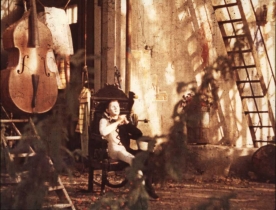
Poilchinelle daydreaming in a long-abandoned greenhouse.
THE HEART OF POLICHINELLE.
V.O. narration
by Leonid and Larisa Alekseychuk.
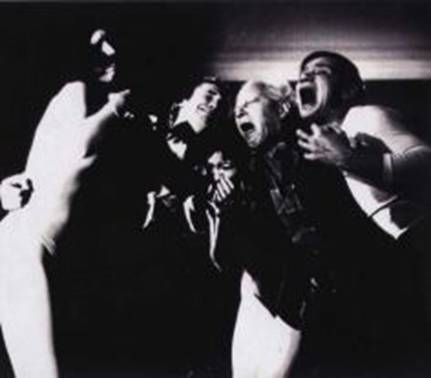
( Actor mimes in front of the mirror.)
A young dancer is about to recount the life of his teacher and choreographer.
Leonid Jacobson: son of the Revolution and stepchild of the Soviet regime. An incorrigible rebel
who makes dance even faces.
( Rehearsal,opening scene ).
Defiant and almost childishly outspoken for his time and his country, choreographer Leonid Jacobson had never been the darling of the Soviet authorities.
The state-controlled film camera was allowed into his rehearsal hall very grudgingly and only once in his entire lifetime. Yet even this unique footage on the 70 year-old master, shot a year before his death, was doomed in advance.
By the order of September, 1975 for the Leningrad Documentary Studio, my film on Jacobson, "The Heart Of Polichinelle", was banned for "grave ideological errors and gross deviations from the principles of Socialist Realism."
Totalitarian pomposity aside, what exactly could scare the censors in a ballet film?
Practically everything. Not only every scene, but every shot was closely scrutinized for hidden subversive allusions.
Polichinelle as Jacobson's alter ego? A Soviet artist with a split personality? Hiding under a mask?
Wax tears? Solidified means eternal? An eternally unhappy Soviet artist?
An abandoned greenhouse, what does it signify? General abandonment of the Soviet arts?
Interpreted so astutely, the film was banned...
...I, its subversive director, fired, blacklisted and forced into emigration...
...Jacobson expelled from the film on Jacobson, by discarding all he said and performed in the film ...
...together with the frolics of Polichinelle, his choreographic creation and filmic twin...
...and the dancing scenes appropriated for a servile remake.
To make the triumph of Socialist Realism irreversible, Polichinelle's gravediggers burned the negative of the incriminated footage.
They only goofed when it came to the workprint.
This is why the heart of Polichinelle, although a bit scratched, is pounding as powerfully as always.
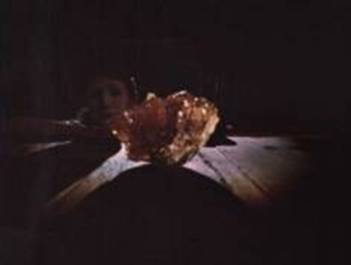
( Rehearsal )
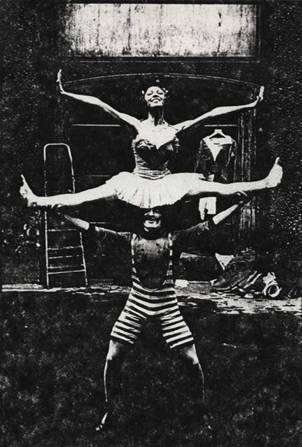
Only five years before his death did Jacobson obtained what he deserved since his youth: artistic directorship of a ballet troupe "Choreographic Miniatures".
He actually fathered it, proving to be the youngest of his youthful charges.
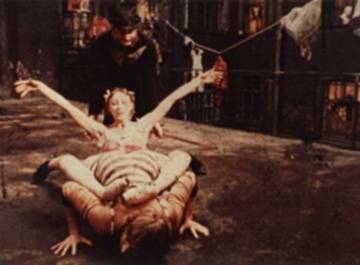
( "Exercise XX" , reflections in the water.)
For Jacobson, classical ballet was neither a collection of stereotyped movements nor the only correct style, but a mere grammar of a rich language capable of expressing any style, the language in which the dancer's head and heart are as important and eloquent parts of a dancing body as arms and legs.
Ridiculing the ossified, sclerotic classical style and knowing the real one better than its aggressive defenders, Jacobson in every new work was trying to liberate poor Terpsichore from dogmatic chains, to give her back her long-lost image of a free and joyous Goddess of Dance.
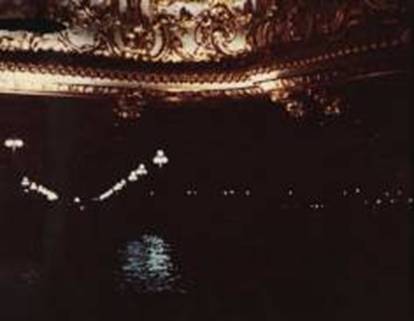 r r
Teasing and challenging the omnipotent half-wits was an integral part of Jacobson's effervescent art. Needless to say,
the censors generously paid him back.
Ballet "Hiroshima" was banned, incredibly, for "pessimism" and "pacifism". Short of announcing the atomic bomb an entertaining subject for an exuberant pas-de-deux, the authorities needed something more militant, not to scare, but to cheer up the population in their fear-inducing struggle for peace ion the world.
Ballet "The City", inspired by the engravings of Franz Mazereel, was depicting the so called capitalist decay. For doing that, the choreographer himself was accused of "bourgeois decadence". Which simply meant a stern anti-western and anti-modernist message.
A satirical ballet on Hitler did not even reach the stage of dress rehearsals. In the country of "real socialism", any dictatorship became a touchy subject.
Masochistically justifying the October Revolution in his poem "The Twelve", a refined Russian poet Alexander Block makes Christ himself lead a unit of revolutionary guardians, all former criminals. Pitilessly precise in depicting their past, Jacobson's free plasticity read as a profecy of a cheerless present. Neither the famous literary source nor even a reverently suggested Lenin in place of the inadmissible figure of Christ could save the masterpiece of choreography from an irrevocable ban. What finally seemed to be a welcome subject matter, backfired again.
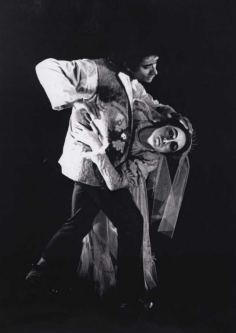
As to the "Wedding Cortege", inspired by the paintings of Marc Chagall - at the time also a long-forbidden artist in the USSR - the story of a poor Jewish youth who loses his beloved to a rich idiot somehow proved inopportune at the time when the Jewish emigration was rapidly increasing. Although customarily paranoid, the censors were not all that wrong. A bitter departure of thousands of families from their ungrateful land clearly echoed in the desperate farewell of two divided lovers.
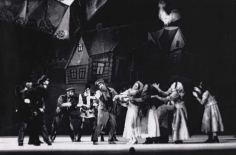
That was the strongest and the most uncompromising Jacobson, strictly forbidden for stage, let alone to be filmed. An immense and sensational repertoir was actually stolen from the artist, and he himself, from the world culture.
While the Soviet official ballet, presented as one of the highest socialist achievements, sort of Marxism Leninism in tutu, was eagerly exported all over the world, the champion of free plasticity, and his theatre were forbidden to travel beyond Leningrad.
(Improvisation "The Stone Hand")
These alebaster limbs accidentally found in the gallery, immediately facsinated Jacobson and prompted one of his famous improvisations. He must have recognized the dead hand
which was on his throat throughout his life.
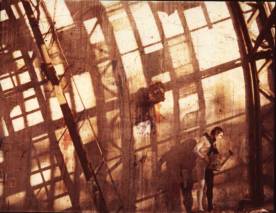
( Polich. dancing before Controllers; photos of his banned ballets)
Teasing and challenging the omnipotent half-wits was an integral part of Jacobson's effervescent art. Needless to say, the censors generously paid him back.
Ballet "Hiroshima" was banned, incredibly, for "pessimism" and "pacifism". Short of announcing the atomic bomb an entertaining subject for an exuberant pas-de-deux, the authorities needed something more militant, not to scare, but to cheer up the population in their fear-inducing struggle for peace ion the world.
Ballet "The City", inspired by the engravings of Franz Mazereel, was depicting the so called capitalist decay. For doing that, the choreographer himself was accused of "bourgeois decadence". Which simply meant a stern anti-western and anti-modernist message.
A satirical ballet on Hitler did not even reach the stage of dress rehearsals. In the country of "real socialism", any dictatorship became a touchy subject.
Masochistically justifying the October Revolution in his poem "The Twelve", a refined Russian poet Alexander Block makes Christ himself lead a unit of revolutionary guardians, all former criminals. Pitilessly precise in depicting their past, Jacobson's free plasticity read as a profecy of a cheerless present. Neither the famous literary source nor even a reverently suggested Lenin in place of the inadmissible figure of Christ could save the masterpiece of choreography from an irrevocable ban. What finally seemed to be a welcome subject matter, backfired again.
As to the "Wedding Cortege", inspired by the paintings of Marc Chagall - at the time also a long-forbidden artist in the USSR - the story of a poor Jewish youth who loses his beloved to a rich idiot somehow proved inopportune at the time when the Jewish emigration was rapidly increasing. Although customarily paranoid, the censors were not all that wrong. A bitter departure of thousands of families from their ungrateful land clearly echoed in the desperate farewell of two divided lovers.
That was the strongest and the most uncompromising Jacobson, strictly forbidden for stage, let alone to be filmed. An immense and sensational repertoir was actually stolen from the artist, and he himself, from the world culture.
While the Soviet official ballet, presented as one of the highest socialist achievements, sort of Marxism Leninism in tutu, was eagerly exported all over the world, the champion of free plasticity, and his theatre were forbidden to travel beyond Leningrad.
(Improvisation "The Stone Hand")
These alebaster limbs accidentally found in the gallery, immediately facsinated Jacobson and prompted one of his famous improvisations. He must have recognized the dead hand
which was on his throat throughout his life.
( Jac-n in rehearsals. Non sync. fragment and photos.)
To some extent, every artist is a Polichinelle. If he is an artist. When crawling becomes the only way of walking, he soars in the sky. When everybody around smears his face to hide it under a garish mixture of colours, he jealously guards the impeccable whiteness of his mask. When others are whining and complaining, he bursts with a defiant laughter, but as soon as brainless giggling becomes the order of the day, he cries. When people become lifeless puppets, he tears out his throbbing heart, not needed by anybody, and extends it to everybody.
(Death of Polichinelle)
Polichinelle died in 1975, in the city populated by his creations. Red-nosed buffoons were mourning the white clown, at the same time destroying his images.
Well, a clown's funeral has to be bizarre.
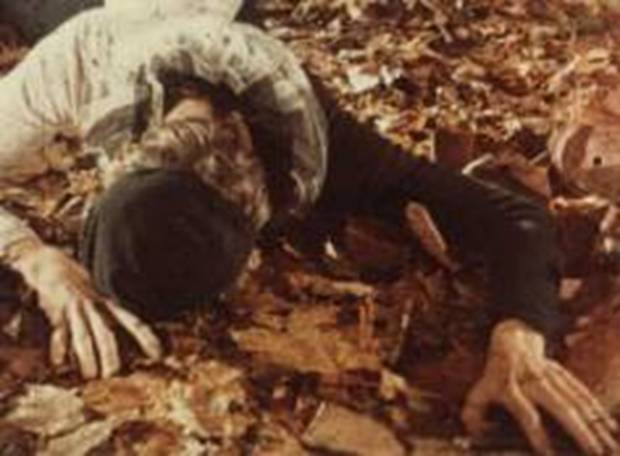
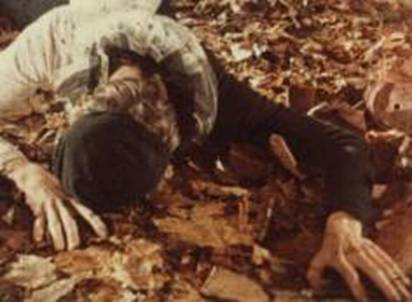

ARTICLES ON CINEMA: www. koreanfilm.org/ithurts.html
PHOTO ALBUM
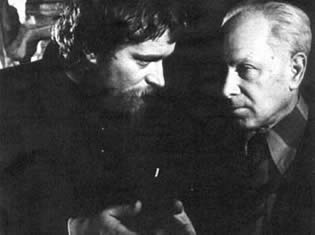
PRESS:
........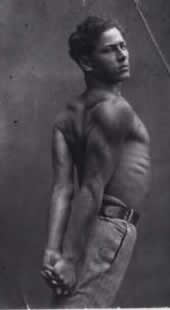 ....... .......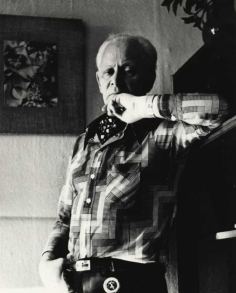
Natalia ZOZULINA
Quarterly PETERSBURG THEATRE MAGAZINE, # 1 (35) 2004
At the threshold of Leonid Jacobson’s birth centennial, in the full swing of discussing and preparing commemoration, Leonid Alekseychuk's letter arrived like a gift of destiny. Now, it's
impossible to imagine the recent celebration without his "Heart Of Polichinelle"- it was like Jacobson's coming in flesh and blood to his own 100-th birthday party.
Just look, here he is, at a rehearsal in a ballet class, with a beautiful silver hair and a patrician face, untouched by age. No doubt, a lively and frolicsome lad (oh so familiar to anybody who saw Y. at work!) peeps out now and then through the patrician’s appearance. Perhaps, it was that boy to have suggested to the director the pivotal idea of a twin? Brisk and little Polichinelle from Jacobson.’s miniature – the choreographer’s mask which consents to retell the destiny of the artist with a rich "vocabulary" of choreographic and cinematographic metaphors – becomes the film's protagonist immersing us in the world of his inexhaustible imagination…
Jacobson is filmed in real environment of life and work, in black- and-white documentary manner. That record is invaluable not only because it has preserved for posterity the image of an outstanding artist (although for that alone we owe to the director a heartfelt kowtow). More precious still is overflowing love and admiration of the contagious "film object", conquering the viewer in a flash. Indeed, Alekseychuk's Jakobson is inimitable at every single instant. (Follows a lively description of a few characteristic scenes with Jacobson.)
The camera captures the choreographer looking at his own creation like a child enchanted by magic, in all his inherent unique spontaneity, as if the crew were invisible. Hence the feeling of an intimate familiarity with Jacobson although black and white footage is not too long.
Jacobson-Polichinelle (dancer of Choreographic Miniatures Vladimir Zenzinov) occupies on screen much more space and time. He scurries among the company’s dancers watching with curiosity their exercises but he doesn’t feel bored at all even in solitude, like a kid playing with himself and always dreaming of something. Those dreams are in fact creative foresights revealed by the director… (Follows a descriptions of some filmic episodes.)
Besides, Polichinelle is also a performer facing every evening a capricious and ungrateful public.
Unable to sustain anymore derision and curses, he flees in the expanse of Petersburg squares and embankments to invoke compassion and help with speechless “screams” of dance. But the city is
empty, and nobody notices the clown’s death.
It’s not accidental that Polichinelle absorbs the film’s entire colour area, the realm of dance and artistic invention where reign the laws of visual expression and unfold stories created by Alekseychuk. It is where the director challenges our stereotyped ideas about ballet films, accepts and wins the battle against them. He refuses mere filmic stenography and, breaking the leash of our “ballet concert” expectations, creates our most original native picture about ballet where dance and the range of visual associations lurking in it grow into each other.
(Follows a description of a few more visually inventive episodes.)
After having seen finally Alekseychuk’s film – and my impression of it is indelible – it’s painful to think that we could never see it had the director not proven to be an unbending fighter and weathered professional who managed to resurrect the shattered “Heart Of Polichinelle” after many years, with the negative annihilated by the authorities. Well, it’s a good occasion to recall with optimism the finale of Fokine’s “Petrushka”, where just killed hero, just a moment later alive and kicking, teases from the roof his cruel master. And, although the instant before our encounter with the film-Phoenix has been more than two decades-long, the most important thing is that “there's life in the old dog yet!”, and let’s surmise together at whom laughs from screen, splitting his sides His Majesty Jacobson?
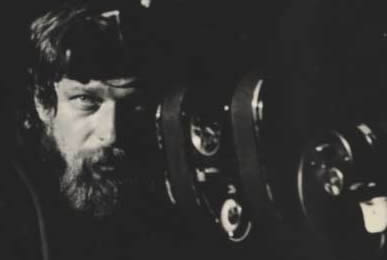
........................................Leonid Alekseychuk al lavoro. ........................
MANIFESTO, Thursday, 10th February 1994
LEONID JACOBSON, TOO REVOLUTIONARY FOR BREZHNEV
by Ella Baffoni.
"The son of the Revolution, the Regime's step-son": this is the life of Leonid Jacobson, a choreographer little known in Europe, who died in 1975. He is the subject of "The Heart Of Polichinelle" (tomorrow on RaiTre at 23.45), a resurrected film.
Shot in 1975 by Leonid and Larisa Alekseychuk, it was censored and destroyed for "grave ideological errors and gross deviations from the Socialist Realism". At least the negative was destroyed: fortunately, workprint outtakes were salvaged; today, they are restored and edited by the directors, with the collaboration of Rai.
The guiding thread of the journey through those little known choreographic pieces, very different from the classic repertoir which the USSR was exporting in the seventies, is a bouncing dialogue between Jacobson and his twin, the dancer who parrots him jokingly: more a Pierrot and Charlot than Pulcinella, a spirit both free and iconoclastic, scoffing and rebellious, interpreting the 70 year-old choreographer's dreams. In the depth of an amber piece - or perhaps of his heart, actually a piece of rosin whose powder renders the ballet shoes less slippery - he watches the birth of dancing figures.
There is a wandering circus which invades the courtyard of a decrepit apartment building and dances a frenetic Stravinsky. There is an abandoned greenhouse, the place for a clownish watering withered flowers planted in ballet shoes, where "dancing faces" are crowded, with their grinning, mocking, funny grimacing. Then, "The Nymph and the Minotaur", "The Kiss", "The Eternal Idol" and "Ecstasy", all inspired by Rodin, are followed by "Exercise XX" and "Pas De Quatre", all shot in different locations. In the meantime, the puppet and the puppeteer are basking in pranks and suggest to each other new itineraries.
Although never repudiated ( by the choreographer- L.A.), the classic ballet is only the training ground and the point of departure for new creative directions. The first among them is free plasticity, always used meaningfully, never for its own sake, in "a headless hat" fashion. For that, too, Jacobson was accused of the "bourgois decadence" and his "Hiroshima", of "pacifism";
and "The Wedding Cortege", inspired by Marc Chagall- a story of two Jewish lovers separated by a rich suitor- was created too simultaneously with the Jewish exodus from the USSR to avoid political suspicions.
The creator of "Spartacus" in the Kirov ballet, Jacobson held in great esteem Alvin Ailey and George Balanchine, who was his school companion, and was rather cold towards Bejart. Volcanic and Dionisian, an experimenter in a continuous research, Jacobson was hardly tolerated by the officialdom. "The Heart Of Polichinelle" have not survived its hero: death verdict for the film was executed just a few days before the choreographer's funeral. That was not, however, a simple execution: ballet pieces were ripped out of the whole film and intermeshed with the old repertory pieces. " A porridge", says Alekseychuk with disdain, "made by a film school graduate in exchange for an apartment and, ironically, entitled "Contrasts".
The film's judge and butcher, Studio Head Kuzin, have survived to the time of perestroyka. Moreover, perfectly recycled, he represented Russia at the Festival of Peoples in Florence: a yet another gimmick in the face of Jacobson, an avowed enemy of the "omnipotent incompetence and proliferating mediocrity".
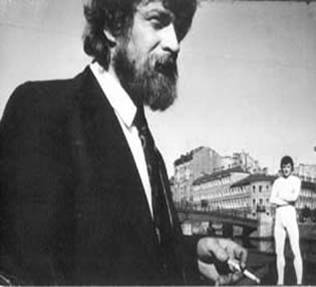 ... ...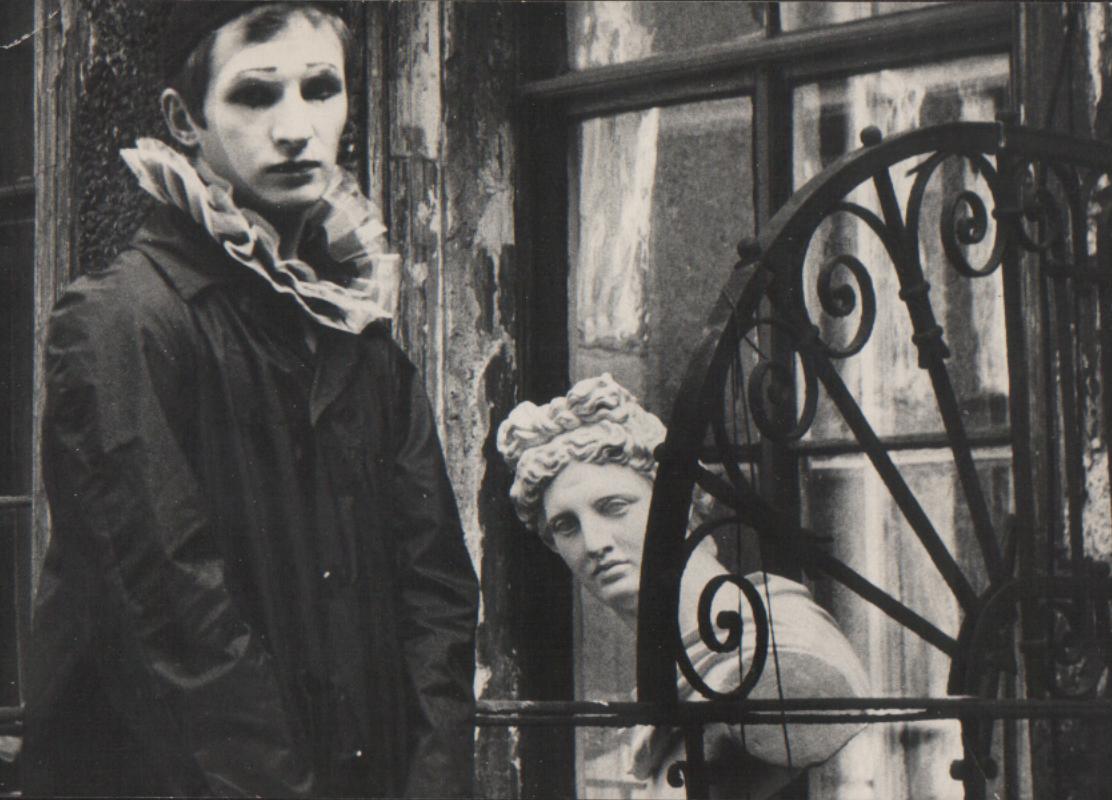
BACK
|











 r
r








